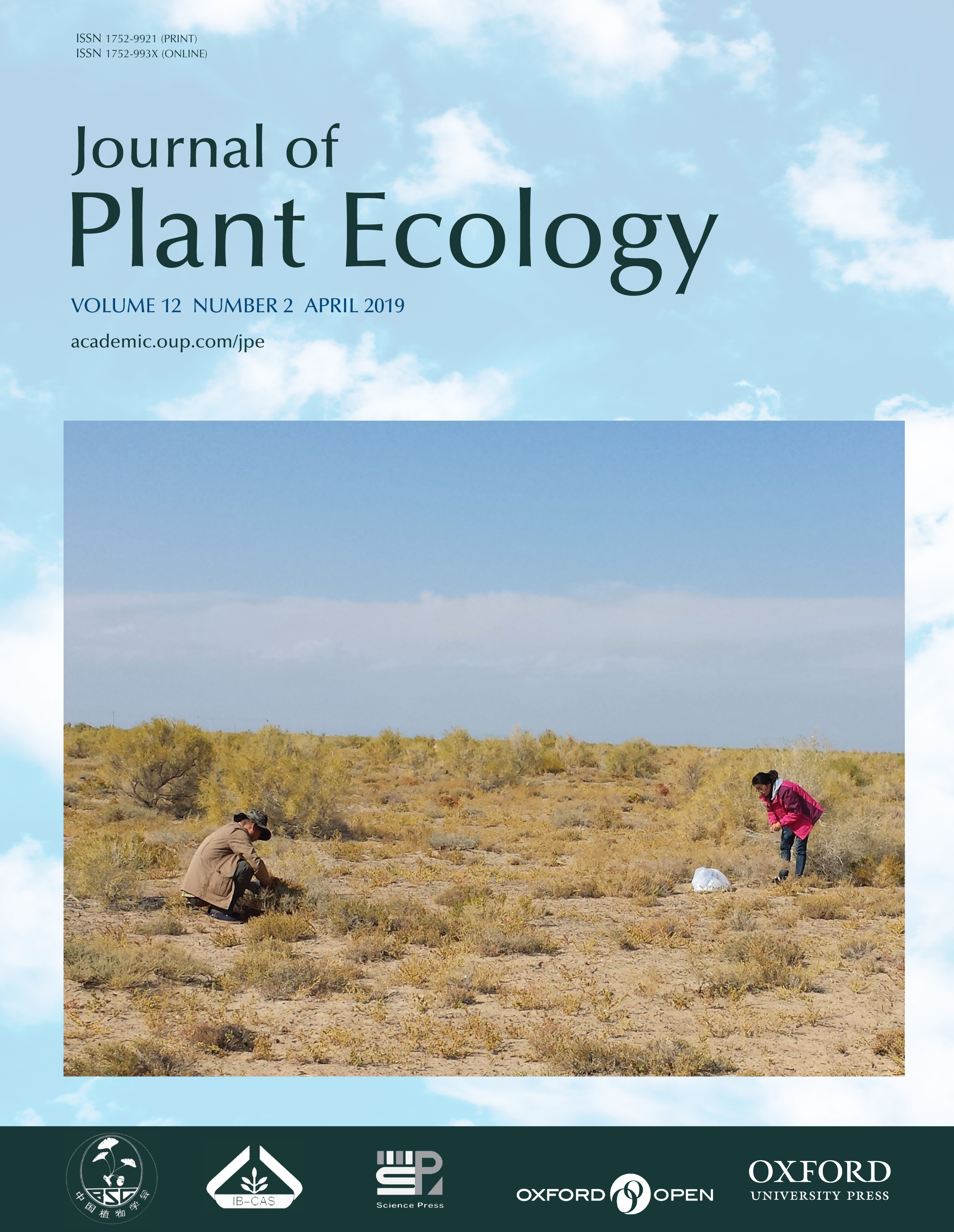Meixia Zhang, Yan Luo, Zhengbing Yan, Jiao Chen, Anwar Eziz, Kaihui Li and Wenxuan Han
Aims
We aim to investigate variations in the resorption efficiencies of 10 mineral nutrients [i.e. nitrogen (N), phosphorus (P), potassium (K), magnesium (Mg), calcium (Ca), manganese (Mn), zinc (Zn), aluminum (Al), iron (Fe) and copper (Cu)] in leaves of desert shrubs and to explore effects of aridity on resorption efficiency of these nutrients.
Methods
Plant samples were collected from 10 sites in northern Xinjiang Uygur Autonomous Region of China. Samples of green and senesced leaves were analysed to determine concentrations of N, P, K, Mg, Ca, Mn, Zn, Al, Fe and Cu and thus the nutrient resorption efficiency.
Important Findings
The mean nutrient concentrations in the desert shrubs varied, with the stoichiometric ratio Ca:N (19.3 mg g?1):K (10.5 mg g?1):Mg:P (1.01 mg g?1):Al:Fe:Mn:Zn:Cu (4.78 mg kg?1) = 4038:2950:2199:1816:211:37:32:11:2:1 in green leaves; and Ca:N (12.6 mg g?1):Mg:K (7.6 mg g?1):P (0.56 mg g?1):Fe:Al:Mn:Zn:Cu (2.85 mg kg?1) = 5583:3710:2943:2523:178:133:119:19:3.7:1 in senesced leaves. Resorption generally occurred for six elements (N, P, K, Cu, Mg and Mn, with average resorption efficiency 47.8%, 52.0%, 38.6%, 41.0%, 12.7% and 7.89%, respectively) during leaf senescence, while the other four nutrients tended to accumulate in senesced leaves, showing averagely negative resorption efficiencies [Ca (–3.87%), Al (?57.1%), Zn (?62.6%), Fe (?89.6%)]. Aridity showed strikingly different effects on the resorption process of the 10 nutrients. Of the four elements with totally (N/P/K) or mostly (Cu) positive observations of resorption efficiency, their resorption generally decreased with aridity, suggesting that drought stress had negative effects on the resorption efficiencies of these elements. In contrast, with at least one-third observations of resorption efficiency being negative, the other elements (Mg/Mn/Ca/Zn/Al/Fe) showed generally increasing resorptive tendency with aridity, except for Zn. This research provided a systematic analysis on the large variation and contrasting responses of the resorption of multi-elements to aridity in typical desert shrubs. Our findings foster the understanding of nutrient resorption patterns of desert plants and enable us to better predict the contrastive effects of drought stress on the cycling of diverse nutrients and the consequent stoichiometric decoupling in plants of desert ecosystems.
 Volume 12 Issue 2
Volume 12 Issue 2






